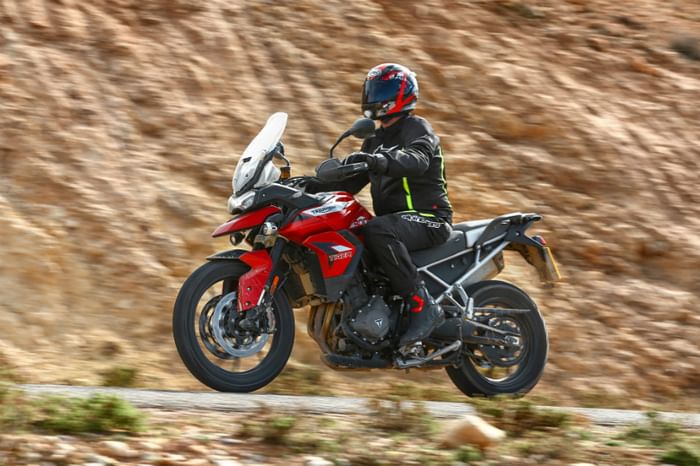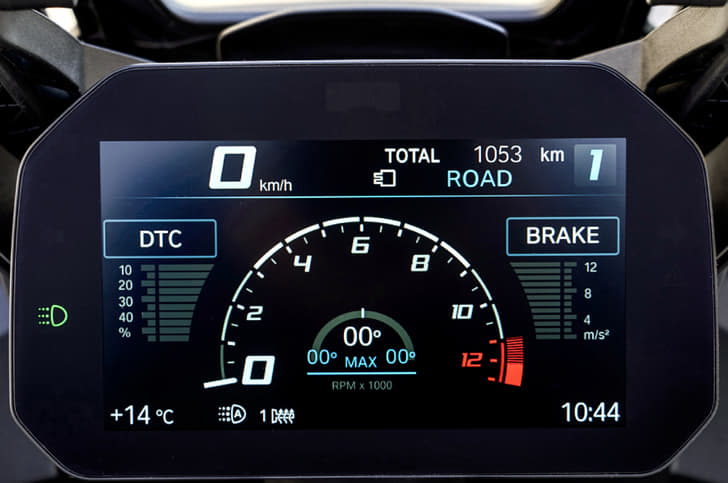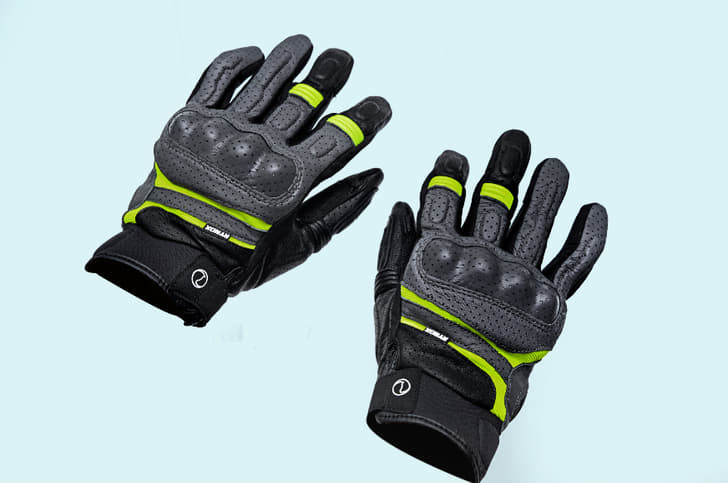There are big adventure motorcycles and then there's the Triumph Tiger. It's one of the most recognised and revered motorcycles in the category and has generated quite a fan following in the process. It goes without saying, then, that it takes some serious conviction to pull the plug on a long-running, successful motorcycle and replace it with something that is all-new and quite different. Will it resonate with the legions of followers? Will it tick the boxes and tug at the heartstrings? Can it fill the incredibly large, adventure-motorcycle-sized shoes of its predecessor? We've come all the way to beautiful Morocco to find answers.
What is it?
Triumph began working on the new Tiger 900 from scratch, so the motorcycle you see here bears no resemblance to the Tiger 800, except for the switchgear that’s been carried forward. This, I think, was essential; as the old Tiger’s design, despite timely updates, had grown long in the tooth. They've also dropped the laundry list of monikers that denote the road and off-road biased Tiger. The new Tiger 900 is classified simply as the GT or the Rally. The Pro suffix on either motorcycle indicates that it's the fully loaded, top-of-the-line version.

The GT Pro is the top-spec road-biased Tiger, evident in the cast alloy wheels, lower ride height and its new Marzocchi suspension with an electronically adjustable, gas-charged monoshock. The Rally Pro, as you must have guessed by now, is the highest-spec off-road-biased Tiger, as seen in its fully adjustable and long travel suspension (now Showa), higher ground clearance, and bigger front wheel. The Rally now gets tubeless wire-spoke rims – a much-needed piece of equipment that was missing all along in the Tiger 800 XC range. It makes it massively easy to fix a puncture and get back on the road but there might be a few hardcore off-road junkies who'd have liked to have the inner tube so they could carry on in the event of a rim bend. Nevertheless, a vast majority prefer the convenience of a tubeless rim, which is why the Rally Pro comes equipped with a pair.
While this is what essentially separates the GT and the Rally Pro, they share the same frame, body panels, 7.0-inch TFT display and the newly developed in-line triple engine.
I have to admit, I was underwhelmed when I saw the new Tiger's photos on the interweb. But after looking at it in person, I'm convinced that pictures simply don't do justice to the bike's design. The Tiger 900 looks fresh; and therein lies its appeal. Elements such as the sleek pair of LED headlamps with an integrated LED unibrow above, give the face a dash of aggression, while the tall, easy-to-adjust windscreen and aero deflectors sit neatly at the top. A prominent beak completes the adventure motorcycle-correct front end and I like how striking it looks in the sea of adventure tourers these days. The red paint work looks fetching as well, but it’s the Rally Pro’s matte-green shade and white frame that look rather special.

The side profile reveals the cleverly designed fuel tank; and although it’s narrower than the previous Tiger's tank (especially in the area where the seat and tank overlap) it holds more fuel, at its 20-litre capacity. The new, split radiator sits on either side of the bike with a well-designed shroud covering the large fans. Another notable (and thoughtful) improvement is the repositioned LED indicators that sit next to the headlamp – unlike on the previous bike, where it was fixed to the radiator shroud and easily broke if the bike tipped over. The tail section of the Tiger 900 looks minimal, as there are no body panels, save for a plastic extension that houses the new horizontal tail lamp.

The overall design is well-executed, and the new Tiger will manage to carve an identity of its own. However, the real magic lies beneath the body panels, where Triumph has finally addressed a long-pending issue. The frame and subframe in the 800 were welded together as one piece and in the event of a serious accident, which could result in a bent subframe or pillion foot-rest hanger (also previously welded) the entire frame had to be replaced, shooting the repair bill up into the stratosphere. In the new bike, a lightweight, aluminium subframe is bolted to a new frame; this makes it easier and cost-effective to replace if damaged. It’s the same case with the bolt-on pillion footrest as well.
When you sit on the new Tiger, the seats feel far more accommodating than what its slim profile suggests. Just as before, the seats on both the GT Pro and Rally Pro can be manually lowered by 20mm, in a matter of 2-3min, which should make the new Tiger more accessible to a wide set of buyers. But that’s not all, as the handlebar has also been moved 10mm closer to the rider, resulting in a relaxed riding position, whether seated or standing on the pegs.
On the whole, the Tiger 900’s design is well executed; and in typical Triumph fashion, the quality and finish levels are top notch. Another feature that elevates the premium feel is the new 7.0-inch TFT instrument cluster. The reflection-free unit (since the TFT is bonded to the glass directly) has a feature-rich and crisp display, with four styles to choose from. Bluetooth connectivity and Turn-by-turn navigation are standard features in the Pro models.
What is the engine like?
The Tiger 900’s new in-line triple motor is the star of the show and it all begins with the way it sounds. The previous Tiger's motor was more like a rev-hungry supersport’s. It had a similar sound and characteristics as well. While I won't deny that its intake howl and the distinct whistle it produced at high RPMs was addictive, it never struck a chord as deep as this new motor. Part of the reason for that is the new engine's 1-3-2 firing order and T-plane crank (crank pins in cylinders 1 and 3 are set at 180 degrees while the number 2 cylinder's crank is at 90 degrees, forming a T) that not only claimed to give it stronger low- and mid-range grunt but also makes it sound deeper, angry and menacing, across the rev range. It's poles opposite to the previous triple when it comes to character, and its sense of urgency simply grows on you over a period of time.

The motor's tractable nature and strong bottom end saw me hovering around 30-40kmph in fourth gear while making my way around the busy streets of Marrakesh, and all I had to do was roll on the throttle to pass traffic. However, an open is where this motor truly exhibits its awesome potential. You could easily sit between 60-200kph, all day long without feeling the need of downshifting from sixth to fifth gear. This, again, highlights the strong mid-range of the motor. Give it the beans and the way the power rushes in is a real pleasure (let your mind be blown by 150hp and more). The only real issue are the vibrations in the handlebar that arise under hard acceleration. It's not bothersome and won't leave a numb sensation in your hands, but it’s noticeable and wasn't there with the old engine.
That said, highway cruising speeds are very calm, with the revs hovering around 3,900rpm at 100kmph and below 5,000rpm at 120kmph in sixth gear. This has to do with the taller 5th gear (by 3 percent) and 6th gear (by 7 percent) which is another improvement over the old bike. In effect, it makes the standard up/down quickshifter a bit redundant, as you wouldn't need to shift gears that often. But there’s no denying the rush of keeping the throttle pinned open and flicking through the gearbox, no?
To me, the biggest advantage of this quickshifter lies in the fact that you don't need to pull-in the clutch lever and shift cogs while standing on the pegs and riding off-road. That makes it one less thing to worry about while keeping an eye out for rocks or a patch of loose sand. Also, given the grunty nature of the engine, you manage to stay in the power band while riding off-road for most of the time, which means you don't have to rev the engine hard to accelerate out of tricky situations – say, while riding over a steep, rocky incline.
A clever suite of electronics – in the form of traction control (the smaller Tiger finally gets an IMU) and riding modes in both GT and Rally Pro versions – keeps the bike pointing the right way. The Road, Rain, Sport, Off-road and Rider (custom) riding modes alter the level of traction control and ABS intervention. These systems work so unobtrusively that the only way to say the TC is working is by looking at the bright orange light flashing like a Christmas light on the dash.
The off-road mode in the GT Pro version changes the throttle map to enable it to tackle light trails but for those looking to have more fun, the Rally Pro’s dedicated Off-Road Pro mode turns ABS and TC off, so that you can have a whale of a time, drifting across sand and grinning ear-to-ear inside the helmet. But sweet motor and refined electronics aside, it's the suspension units and fantastic weight distribution that have raised the 'Tiger' experience to a whole new level.
What is it like to ride?
Besides the lighter chassis, Triumph has also made the engine lighter by 2.5kg. This was achieved by using magnesium cam covers, reworking the cooling system and fitting a smaller oil sump which translates to less oil volume. The smaller bottom of the engine enabled Triumph to slot the engine a whole 42mm lower, and angle it slightly forward, without sacrificing ground clearance. This has optimised weight distribution and, along with the new suspension units, have resulted in a Tiger that rides and handles like never before.

On the road, the GT Pros’ Marzocchis did a brilliant job of soaking up bumps – whether in a straight line or mid-corner – and that goes a long way in boosting confidence, especially around unknown roads. The bike stays glued to an intended line, as its now much more communicative front end lets the rider push the bike hard to the point where the pegs end up grinding into the tarmac – despite the bike having more cornering clearance than before. The ability to tailor the electronically adjustable rear suspension damping on the fly is another feature that makes the GT Pro adept at tackling varying types of surfaces, ranging from pockmarked to smooth tarmac.

The Rally Pro, however, was surprisingly fun to chuck around some of the winding sections we encountered, highlighting its ability to tackle both road and off-road sections with aplomb. Naturally, it's in the latter area where the Rally Pro manages to impress the most. The combination of the perfectly set-up suspension, chassis balance, and peppy motor, made it incredibly intuitive to ride this big adventure tourer off-road. Our test bikes were shod with OEM Pirelli Scorpion Rally tyres (sold separately) which unlocked the full potential of the machine. The best thing though, is that it’s really easy to make corrections and stay on the bike. This forgiving nature makes the Rally Pro a motorcycle that’ll keep both novices and the experienced riders happy and entertained.

The new Brembo Stylema brakes are way better than the 800’s and have a considerably strong bite and feel. They are easy to modulate as well, even while riding off-road.
Should I buy one?
It certainly wasn’t an easy job to build upon the strong attributes of the Tiger 800, but what Triumph has managed to achieve with the Tiger 900 GT Pro and Rally Pro bikes is quite promising. The new Tigers offer an adventure touring experience that’s clearly above what the Tiger 800 managed. However, the cherry on top of this cake is that the engine remains a delight, whether it's the performance, or the way it sounds.
































